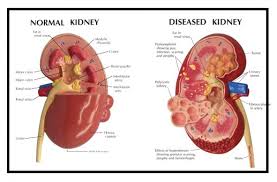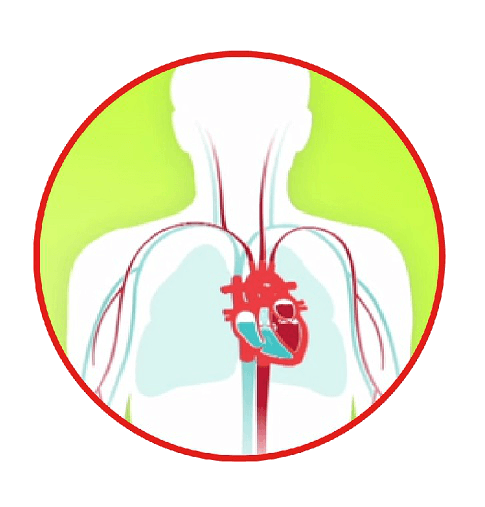COPD
Chronic Obstructive Pulmonary Disease/Chronic Bronchitis/Emphysema

COPD
Also known as Chronic Obstructive Pulmonary Disease, Emphysema
What Is it?
Also known as chronic obstructive pulmonary disease; chronic bronchitis; or emphysema.
COPD, or chronic obstructive pulmonary disease, is a progressive disease that makes it hard to breathe. Progressive means the disease gets worse over time.
COPD can cause coughing that produces large amounts of a slimy substance called mucus, wheezing, shortness of breath, chest tightness, and other symptoms.
Causes
Cigarette smoking is the leading cause of COPD. Most people who have COPD smoke or used to smoke. However, up to 25 percent of people with COPD never smoked. Long-term exposure to other lung irritants—such as air pollution, chemical fumes, or dusts—also may contribute to COPD. A rare genetic condition called alpha-1 antitrypsin (AAT) deficiency can also cause the disease.
Long-term exposure to lung irritants that damage the lungs and the airways usually is the cause of COPD.
In the United States, the most common irritant that causes COPD is cigarette smoke. Pipe, cigar, and other types of tobacco smoke also can cause COPD, especially if the smoke is inhaled.
Breathing in secondhand smoke, which is in the air from other people smoking; air pollution; or chemical fumes or dusts from the environment or workplace also can contribute to COPD.
Rarely, a genetic condition called alpha-1 antitrypsin deficiency may play a role in causing COPD. People who have this condition have low blood levels of alpha-1 antitrypsin (AAT)—a protein made in the liver. Having a low level of the AAT protein can lead to lung damage and COPD if you are exposed to smoke or other lung irritants. If you have alpha-1 antitrypsin deficiency and also smoke, COPD can worsen very quickly.
Some people who have asthma can develop COPD. Asthma is a chronic lung disease that inflames and narrows the airways. Treatment usually can reverse the inflammation and narrowing that occurs in asthma.
Overview
To understand COPD, it helps to understand how the lungs work. The air that you breathe goes down your windpipe into tubes in your lungs called bronchial tubes or airways.
Within the lungs, your bronchial tubes branch many times into thousands of smaller, thinner tubes called bronchioles. These tubes end in bunches of tiny round air sacs called alveoli.
Small blood vessels called capillaries run along the walls of the air sacs. When air reaches the air sacs, oxygen passes through the air sac walls into the blood in the capillaries. At the same time, a waste product, called carbon dioxide (CO2) gas, moves from the capillaries into the air sacs. This process, called gas exchange, brings in oxygen for the body to use for vital functions and removes the CO2.
The airways and air sacs are elastic or stretchy. When you breathe in, each air sac fills up with air, like a small balloon. When you breathe out, the air sacs deflate and the air goes out.
In COPD, less air flows in and out of the airways because of one or more of the following:
The airways and air sacs lose their elastic quality.
The walls between many of the air sacs are destroyed.
The walls of the airways become thick and inflamed.
The airways make more mucus than usual and can become clogged.
Figure A shows the location of the lungs and airways in the body. The inset image shows a detailed cross-section of the bronchioles and alveoli. Figure B shows lungs damaged by COPD. The inset image shows a detailed cross-section of the damaged bronchioles and alveolar walls.
In the United States, the term COPD includes two main conditions—emphysema and chronic bronchitis. In emphysema, the walls between many of the air sacs are damaged. As a result, the air sacs lose their shape and become floppy. This damage also can destroy the walls of the air sacs, leading to fewer and larger air sacs instead of many tiny ones. If this happens, the amount of gas exchange in the lungs is reduced.
In chronic bronchitis, the lining of the airways stays constantly irritated and inflamed, and this causes the lining to swell. Lots of thick mucus forms in the airways, making it hard to breathe.
Most people who have COPD have both emphysema and chronic bronchitis, but the severity of each condition varies from person to person. Thus, the general term COPD is more accurate.
Outlook
COPD is a major cause of disability, and it is the fourth leading cause of death in the United States. Currently, 16 million people are diagnosed with COPD. Many more people may have the disease and not even know it.
COPD develops slowly. Symptoms often worsen over time and can limit your ability to do routine activities. Severe COPD may prevent you from doing even basic activities like walking, cooking, or taking care of yourself.
Most of the time, COPD is diagnosed in middle-aged or older adults. The disease is not contagious, meaning it cannot be passed from person to person.
COPD has no cure yet, and doctors do not know how to reverse the damage to the lungs. However, treatments and lifestyle changes can help you feel better, stay more active, and slow the progress of the disease.
Need Help with COPD or Emphysema?
Keep in mind that at Primary Care Offices
, we have
doctors who accept Medicare and Medicaid on staff, as well as others who are on
the list of Humana healthcare providers.
Contact Primary Care Offices for a same day doctor’s appointment at one of our conveniently located offices all over South Florida. Give us a call at 954-450-9595 , chat online , or visit our patient portal on our home page to get a comprehensive health exam.











